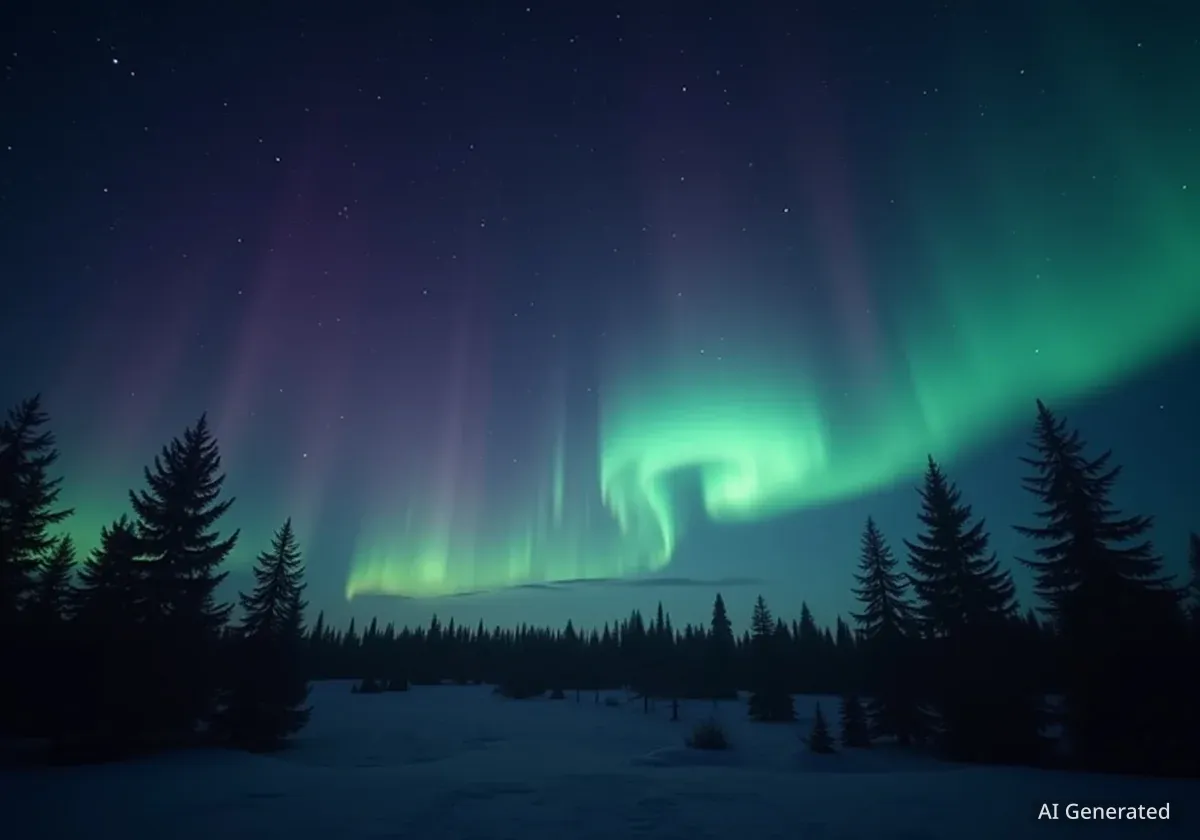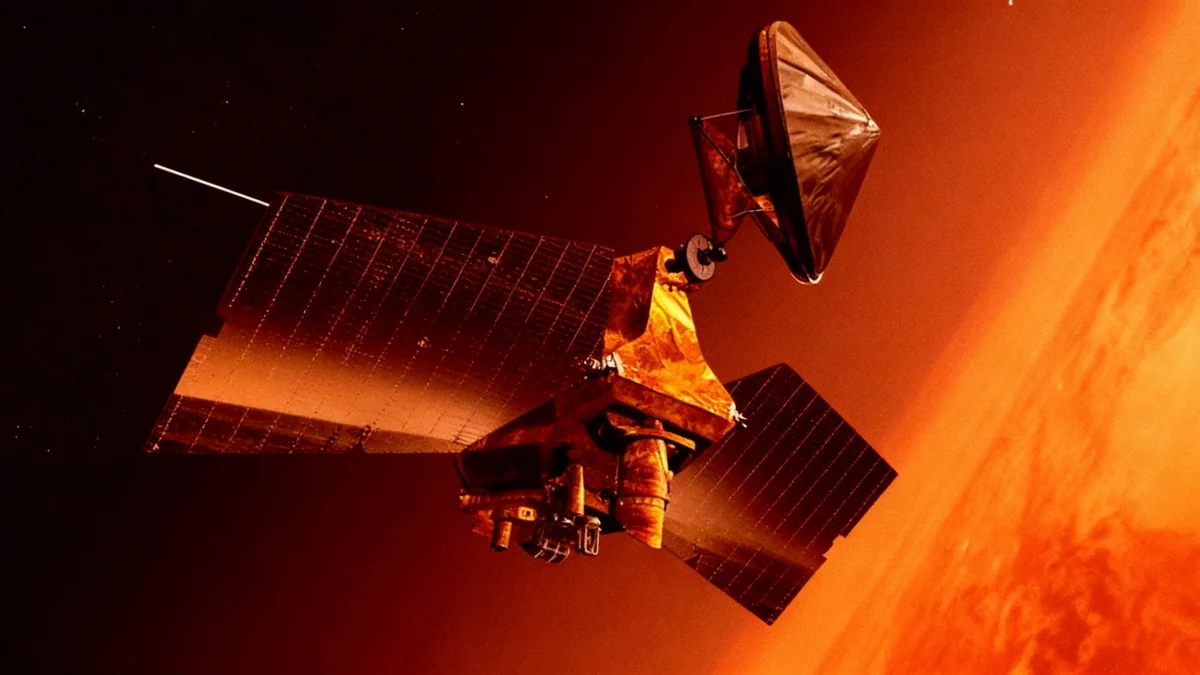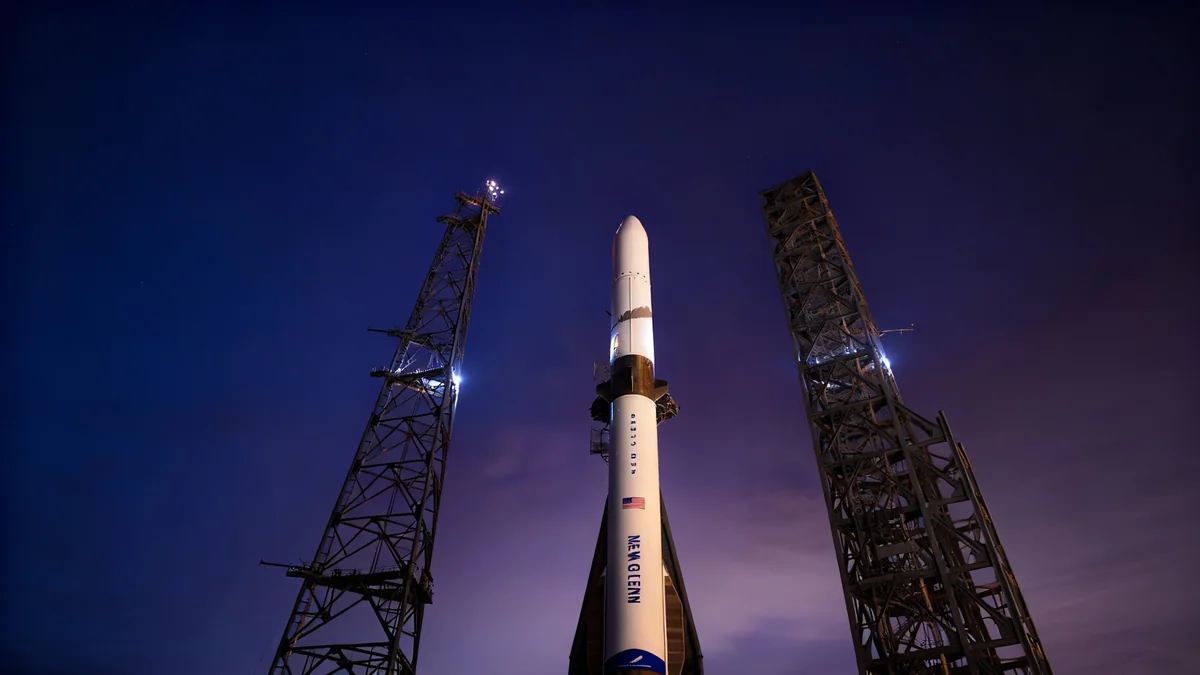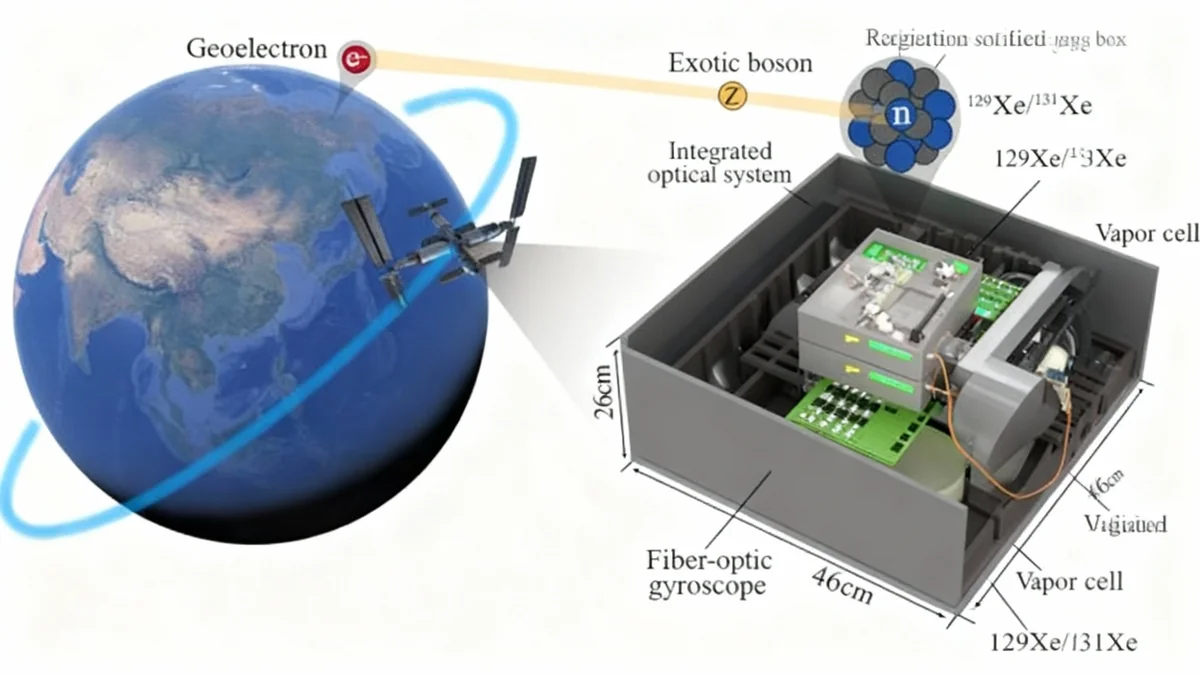The James Webb Space Telescope has achieved a major milestone, detecting complex organic molecules frozen in ice around a young star outside our own galaxy for the first time. This discovery, made in a neighboring dwarf galaxy, provides new insights into the chemical ingredients for life and how they might form in environments different from our own.
Astronomers identified these crucial molecules, which are precursors to the building blocks of life, surrounding a massive protostar named ST6 in the Large Magellanic Cloud, located approximately 163,000 light-years from Earth. The findings challenge and expand our understanding of cosmic chemistry, suggesting that the raw materials for life could be more widespread than previously confirmed.
Key Takeaways
- The James Webb Space Telescope (JWST) has made the first-ever detection of complex organic molecules (COMs) in their ice phase in a galaxy beyond the Milky Way.
- The molecules were found around a young, massive star called ST6 in the Large Magellanic Cloud, a neighboring galaxy.
- Confirmed molecules include methanol, ethanol, and acetic acid—compounds that are precursors to more complex molecules like amino acids.
- This discovery helps astronomers understand if the building blocks for life can form in galaxies with different chemical compositions and harsher radiation environments than our own.
A Groundbreaking Discovery in a Neighboring Galaxy
Using its powerful Mid-Infrared Instrument (MIRI), the JWST has peered into a stellar nursery in the Large Magellanic Cloud (LMC), a satellite galaxy of the Milky Way. There, it analyzed the light passing through a dense cloud of gas and dust surrounding a forming star, known as a protostar.
The telescope detected the chemical signatures of several complex organic molecules, or COMs, frozen onto dust grains. COMs are defined as carbon-based molecules with six or more atoms. These molecules are considered the fundamental ingredients for creating the more intricate structures necessary for life, such as amino acids and RNA.
What Did Webb Find?
Among the confirmed molecules are familiar compounds like acetaldehyde, ethanol (the alcohol in beverages), methanol, methyl formate, and acetic acid (the main component of vinegar). While common on Earth, finding them in their primordial, frozen state in another galaxy is a significant scientific achievement.
This marks the first time scientists have definitively identified COMs in their solid ice phase outside our galaxy. Previously, some of these molecules had been detected in their gas phase in the LMC, but observing them as ices provides a clearer picture of the chemical inventory available at the earliest stages of star and planet formation.
Why This Location Matters
The Large Magellanic Cloud offers a unique laboratory for studying cosmic chemistry. Compared to the Milky Way, the LMC has a lower concentration of heavy elements—elements other than hydrogen and helium. Its environment is more akin to galaxies in the early universe.
This difference in composition could affect how and how many complex molecules form. Additionally, the LMC is bathed in a stronger field of ultraviolet radiation, which can both destroy molecules and trigger new chemical reactions.
Insights into the Early Universe
By studying the chemistry of the LMC, astronomers can gain insights into how the building blocks of life might have formed when the universe was much younger. Understanding this process helps scientists place constraints on how early life could have theoretically emerged in cosmic history.
"We have only just started exploring the dependence of complex organic chemistry in this environment," stated Marta Sewiło of the University of Maryland, who led the research team. The findings suggest that the fundamental chemistry for life can proceed even under conditions very different from those in our own galactic neighborhood.
Interestingly, the team found that the abundance of most COMs around ST6 was lower than in similar protostars within the Milky Way, which was expected due to the LMC's lack of heavy elements. However, one molecule, acetic acid, was found in surprisingly high amounts. Researchers believe the intense ultraviolet radiation in the LMC might be responsible for this overabundance.
From Frozen Ices to Planetary Systems
Stars form from the collapse of vast, cold clouds of gas and dust. In these frigid environments, molecules freeze onto the surfaces of tiny dust grains, forming icy mantles. The discovery around ST6 captures this very early stage.
As the protostar at the center of the cloud grows and heats up, these ices will eventually sublimate, turning directly from a solid into a gas. Once in their gas phase, the molecules can interact more freely, leading to even more complex chemical reactions. These reactions, driven by the protostar's energy, can create larger molecules essential for life, such as amino acids.
The Journey of Cosmic Molecules
The materials in the dusty disk surrounding a young star are the same materials that will eventually form planets, moons, asteroids, and comets. The discovery of COMs in this primordial stage implies that these life-precursor molecules could be incorporated into new planetary systems as they form, delivered to young planets by comets and meteorites—a process believed to have occurred in our own solar system.
Searching for More Clues
The team's analysis of the light from ST6 revealed at least 14 other unidentified chemical signatures. One of these could potentially be glycolaldehyde, a simple sugar that is a precursor to ribose, a key component of RNA.
- Confirmed COMs: Acetaldehyde, Acetic Acid, Ethanol, Methanol, Methyl Formate.
- Potential Detections: At least 14 other molecules, possibly including glycolaldehyde.
- Future Work: More laboratory data is needed to confirm the identities of the unknown molecules.
"We have found evidence that several of the unidentified absorption features could be attributed to glycolaldehyde, but the detection remains inconclusive," Sewiło explained. Verifying these detections requires comparing the telescope's data with laboratory measurements of how different molecules absorb light, a process that highlights the need for continued Earth-based experiments to support astronomical discoveries.
The Power of the Webb Telescope
This discovery would not have been possible without the unprecedented sensitivity of the James Webb Space Telescope. Its ability to observe in the mid-infrared spectrum allows it to see through thick dust clouds and detect the faint chemical fingerprints of molecules frozen in ice.
Before JWST, only four protostars within the Milky Way had confirmed detections of icy COMs. ST6 is now the very first outside our galaxy, opening a new window into astrochemical studies across the cosmos.
The research, published in Astrophysical Journal Letters, not only confirms that the ingredients for life exist elsewhere but also begins to map out how different galactic environments influence their creation. It's a crucial step in answering one of humanity's oldest questions: are we alone in the universe?





